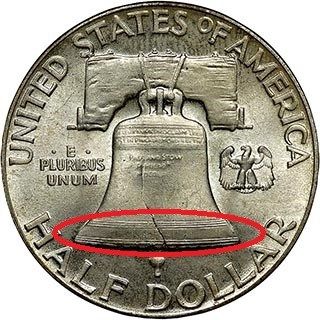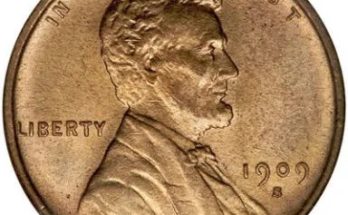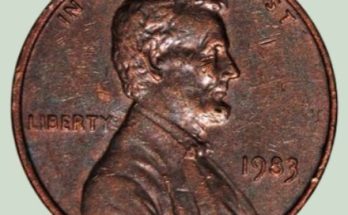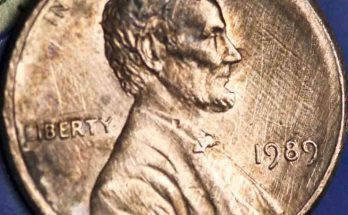Franklin half dollars are among the most popular series for collectors of modern United States coins.
These 90% silver half dollars bear a portrait of Founding Father and prolific inventor Benjamin Franklin on the obverse. The reverse motif features the Liberty Bell in Philadelphia.
Rarest Franklin Half Dollar Business-Strike & Proof Issues (Chart)
There are no regular-issue business-strike Franklin silver half dollars—the type intended for circulation—that can be considered truly rare in a categorical sense. There are, however, a few scarcer circulation issues with relatively low mintages. Several are among the proofs. Thus, these key dates are a little more challenging to locate than others.
Most Valuable Franklin Half Dollars: Key Dates
The coin values listed below are for typical examples. The prices for the business-strike (non-proof) pieces are for average circulated specimens. Uncirculated pieces are worth much more.
| Date & Mintmark | Mintage | Price |
|---|---|---|
| 1949 | 5,164,000 | $15+ |
| 1949-D | 4,120,600 | $15+ |
| 1949-S | 3,744,000 | $15+ |
| 1950 (proof) | 51,386 | $500+ |
| 1951 (proof) | 57,500 | $375+ |
| 1952 (proof) | 81,980 | $200+ |
| 1953 (proof) | 128,800 | $175+ |
| 1954 (proof) | 233,300 | $75+ |
| 1955 | 2,498,181 | $20+ |
| 1955 (proof) | 378,200 | $65+ |
| 1961 (proof, doubled die reverse) | unknown (out of 3,028,244) | $3,000+ |
Franklin Half Dollar Values
Prices for the rest of the series are listed below.
| Date & Mintmark | Mintage | Price |
|---|---|---|
| 1948 | 3,006,814 | $12+ |
| 1948-D | 4,028,600 | $12+ |
| 1950 | 7,793,509 | $11+ |
| 1950-D | 8,031,600 | $11+ |
| 1951 | 16,859,602 | $9+ |
| 1951-D | 9,475,200 | $11+ |
| 1951-S | 13,696,000 | $9+ |
| 1952 | 21,274,073 | $8+ |
| 1952-D | 25,395,600 | $8+ |
| 1952-S | 5,526,000 | $16+ |
| 1953 | 2,796,920 | $8+ |
| 1953-D | 20,900,400 | $8+ |
| 1953-S | 4,148,000 | $9+ |
| 1954 | 13,421,503 | $8+ |
| 1954-D | 25,445,580 | $8+ |
| 1954-S | 4,993,400 | $8+ |
| 1956 | 4,701,384 | $8+ |
| 1957 | 6,361,952 | $8+ |
| 1957-D | 19,966,850 | $8+ |
| 1958 | 4,917,652 | $8+ |
| 1958-D | 23,962,412 | $8+ |
| 1959 | 7,349,291 | $8+ |
| 1959-D | 7,349,291 | $8+ |
| 1960 | 7,715,602 | $8+ |
| 1960-D | 18,215,812 | $8+ |
| 1961 | 11,318,244 | $8+ |
| 1961-D | 20,276,442 | $8+ |
| 1962 | 12,932,019 | $8+ |
| 1962-D | 35,473,281 | $8+ |
| 1963 | 25,239,645 | $8+ |
| 1963-D | 67,069,292 | $8+ |
More About Franklin Half Dollars
Franklin halves were issued from 1948 through 1963. They were the last United States half dollar series struck only in 90% silver, following the Walking Liberty half dollar.
The Kennedy half dollars that followed beginning in 1964 were made as 90% silver circulating coins for only one year. The conversion to less-expensive copper-silver clad came in 1965. Eventually the denomination switched to copper-nickel clad for business strikes in 1971.
John R. Sinnock designed the Franklin half dollar. If the artist’s name sounds familiar it’s because his work famously appears on another popular coin that originated in the mid-1940s: the Roosevelt dime.
Like the Roosevelt dime series, there are few rare or even scarce issues among Franklin halves, as mentioned above. Many are sold for their bullion value, also known as melt value. However, there are several conditional rarities and varieties that are worth looking for. These can range in value from a few hundred dollars to several thousand dollars apiece.
Full-Bell Line Franklin Halves
Uncirculated Franklin half dollar coins with complete horizontal lines on the Liberty Bell are very scarce. Over the past few decades, collectors have come to realize this.
Prices are all over the map for these so-called Full Bell Line (FBL) Franklin halves. That’s partly because certain issues are much rarer with these fully struck details than others.

As a general rule of thumb, expect to pay at least 50% more for a nice FBL Franklin half dollar versus an ordinary example in the same equivalent mint state grade. However, many pieces trade for much more than this. A few dates even sell for many multiples of a similar non-FBL example in the same grade.
For example, the 1953-S Franklin half dollar is a very common coin in the grade of MS-65, where it trades for around $50. Yet, with FBL details, this issue is among the rarest. A 1953-S FBL Franklin halves in MS-65 generally sells for more than $15,000!
Franklin Half Rare Errors & Varieties
All coin series boast errors and varieties. The Franklin half dollar series is certainly no exception.
There are many Franklin half dollars with scarce and intriguing errors. Included are off-center strikes, multiple strikes (not the same as a doubled die), and die cracks. The same is true for the varieties, including doubled dies and repunched mintmarks.

One of the most popular Franklin half varieties is the 1955 Bugs Bunny Franklin half dollar. It’s a somewhat scarce die clash error in which Franklin appears to have two buck teeth. They are very similar in appearance to those donned by famous cartoon hare Bugs Bunny. The 1955 Bugs Bunny half dollar trades for about $30 in MS-60 and $75 in MS-65.
A particularly rare Franklin half dollar variety is the 1961 doubled die proof. It bears strong doubling across the reverse of the coin. Examples of this sought-after variety easily realize $2,500 or more.
Collecting Franklin Half Dollars
The Franklin half dollar series is a terrific set for novice or seasoned coin collectors alike. There are only 35 regular-issue coins (not including proofs or varieties) necessary for assembling a basic complete set. Most of these coins can be easily obtained in circulated grades for little more than their silver value.
Yet, advanced collectors who want a more challenging set need simply turn to high-end and FBL-level issues. For those who want an even tougher objective still, they can add proofs, major varieties, and errors to their want lists.
In other words, the Franklin half dollar is the type of series that can be built for well less than $1,000. Or, perhaps, it can set adventuresome, deep-pocketed collectors back more than $250,000. It all comes down to how much effort one wants to exert in building such a set. It also depends how much—or little—money can be spent at the coin dealer in following through on such a goal.
There is no right or wrong way to collect these coins. With virtually limitless options for pursuing this series, there is no limit on how much fun a numismatist can have building a collection of Franklin silver half dollars.
Joshua McMorrow-Hernandez is a journalist, editor, and blogger who has won multiple awards from the Numismatic Literary Guild. He has also authored numerous books, including works profiling the history of the United States Mint and United States coinage.



